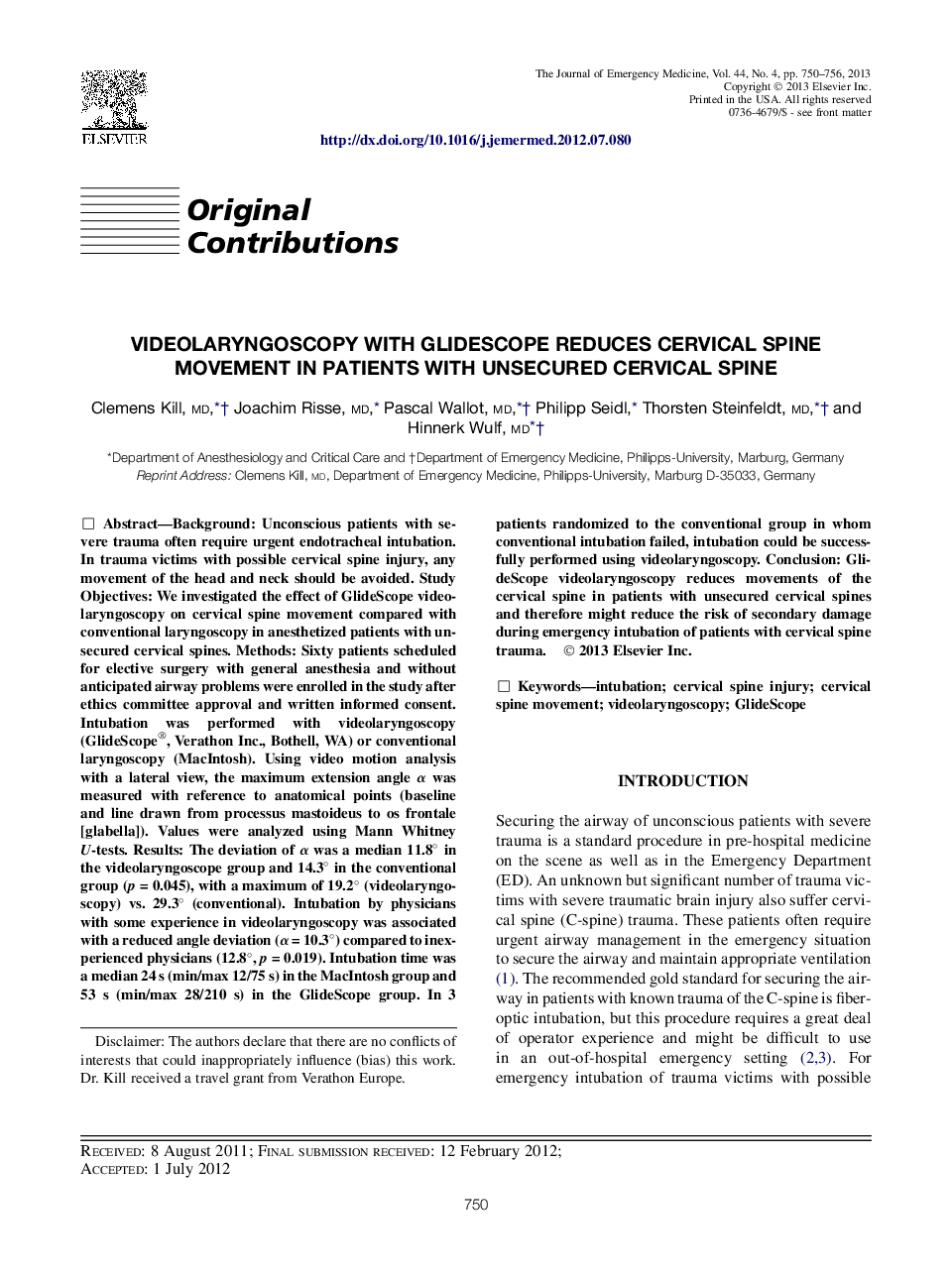| کد مقاله | کد نشریه | سال انتشار | مقاله انگلیسی | نسخه تمام متن |
|---|---|---|---|---|
| 3247247 | 1589150 | 2013 | 7 صفحه PDF | دانلود رایگان |

BackgroundUnconscious patients with severe trauma often require urgent endotracheal intubation. In trauma victims with possible cervical spine injury, any movement of the head and neck should be avoided.Study ObjectivesWe investigated the effect of GlideScope videolaryngoscopy on cervical spine movement compared with conventional laryngoscopy in anesthetized patients with unsecured cervical spines.MethodsSixty patients scheduled for elective surgery with general anesthesia and without anticipated airway problems were enrolled in the study after ethics committee approval and written informed consent. Intubation was performed with videolaryngoscopy (GlideScope®, Verathon Inc., Bothell, WA) or conventional laryngoscopy (MacIntosh). Using video motion analysis with a lateral view, the maximum extension angle α was measured with reference to anatomical points (baseline and line drawn from processus mastoideus to os frontale [glabella]). Values were analyzed using Mann Whitney U-tests.ResultsThe deviation of α was a median 11.8° in the videolaryngoscope group and 14.3° in the conventional group (p = 0.045), with a maximum of 19.2° (videolaryngoscopy) vs. 29.3° (conventional). Intubation by physicians with some experience in videolaryngoscopy was associated with a reduced angle deviation (α = 10.3°) compared to inexperienced physicians (12.8°, p = 0.019). Intubation time was a median 24 s (min/max 12/75 s) in the MacIntosh group and 53 s (min/max 28/210 s) in the GlideScope group. In 3 patients randomized to the conventional group in whom conventional intubation failed, intubation could be successfully performed using videolaryngoscopy.ConclusionGlideScope videolaryngoscopy reduces movements of the cervical spine in patients with unsecured cervical spines and therefore might reduce the risk of secondary damage during emergency intubation of patients with cervical spine trauma.
Journal: The Journal of Emergency Medicine - Volume 44, Issue 4, April 2013, Pages 750–756